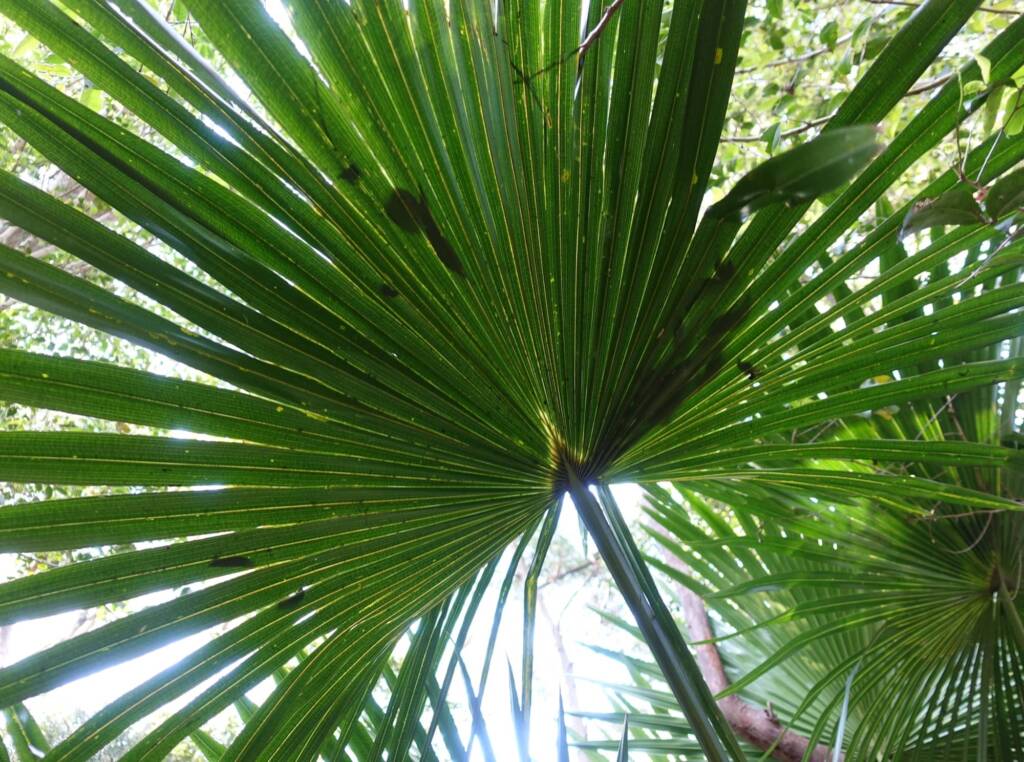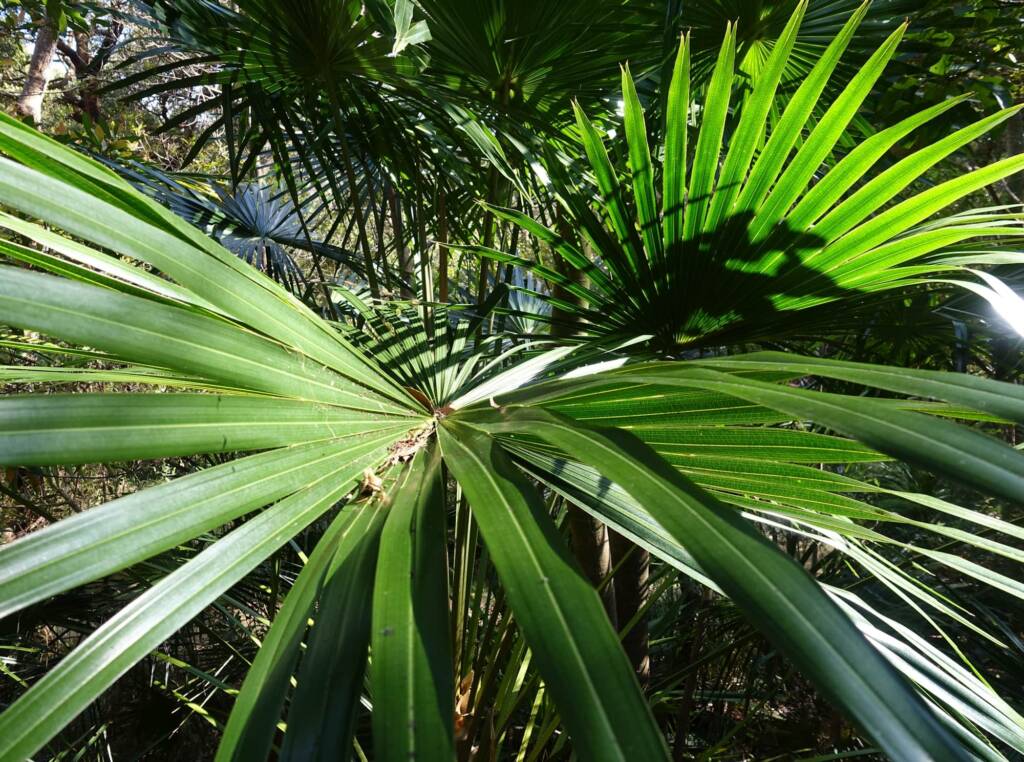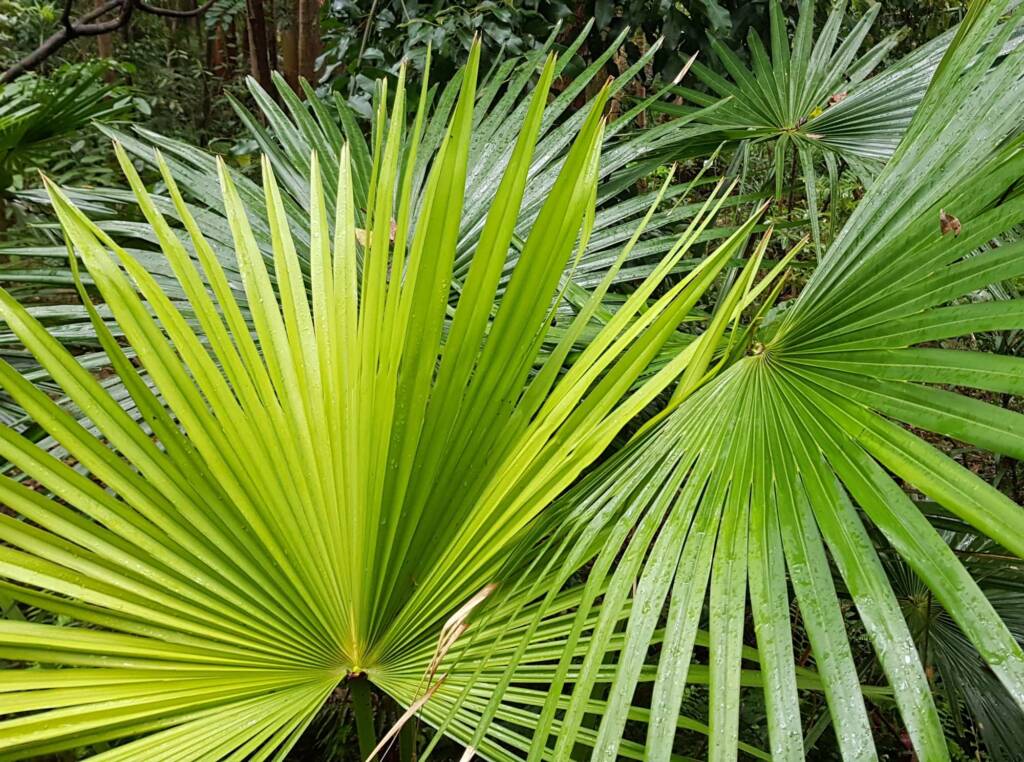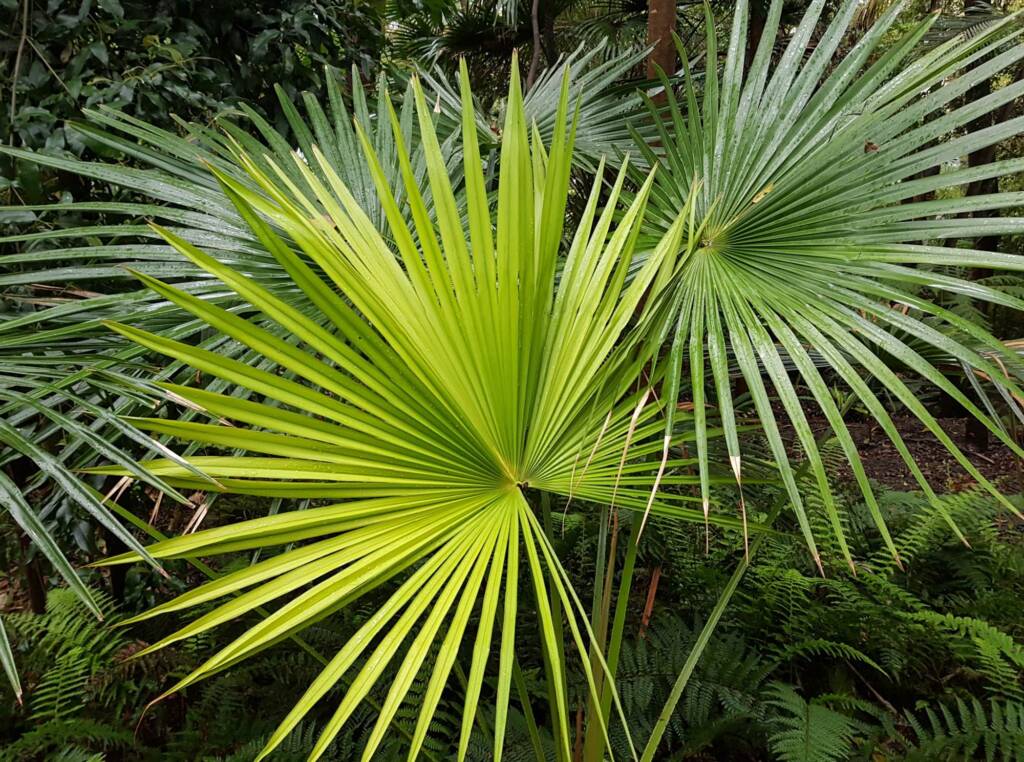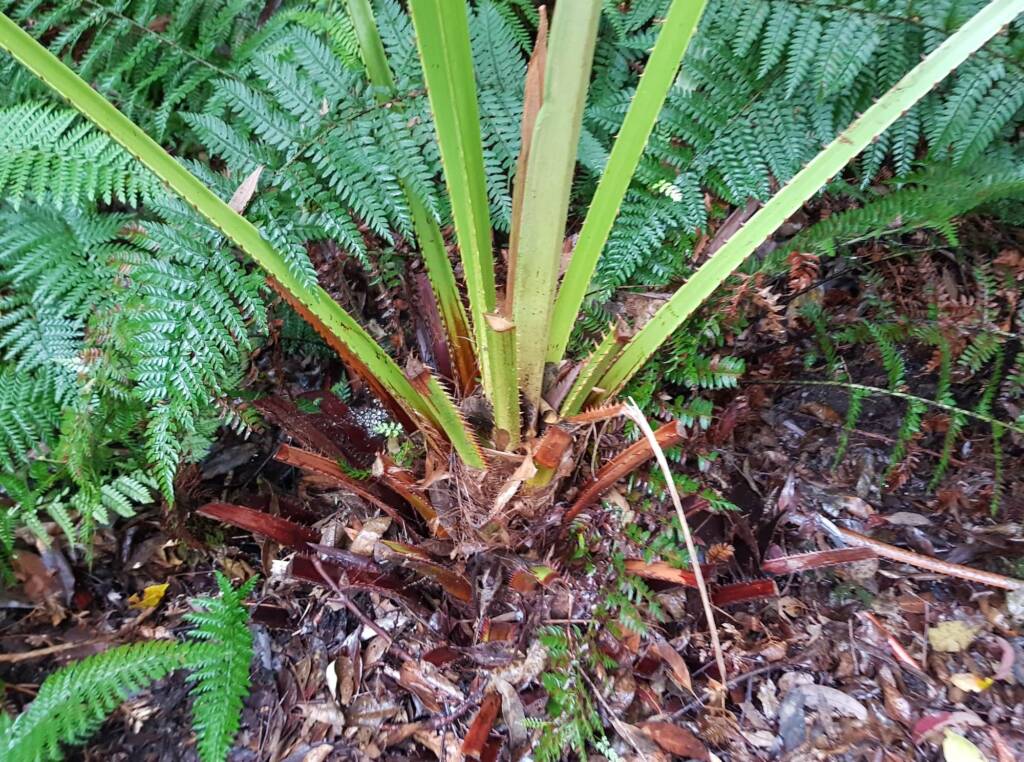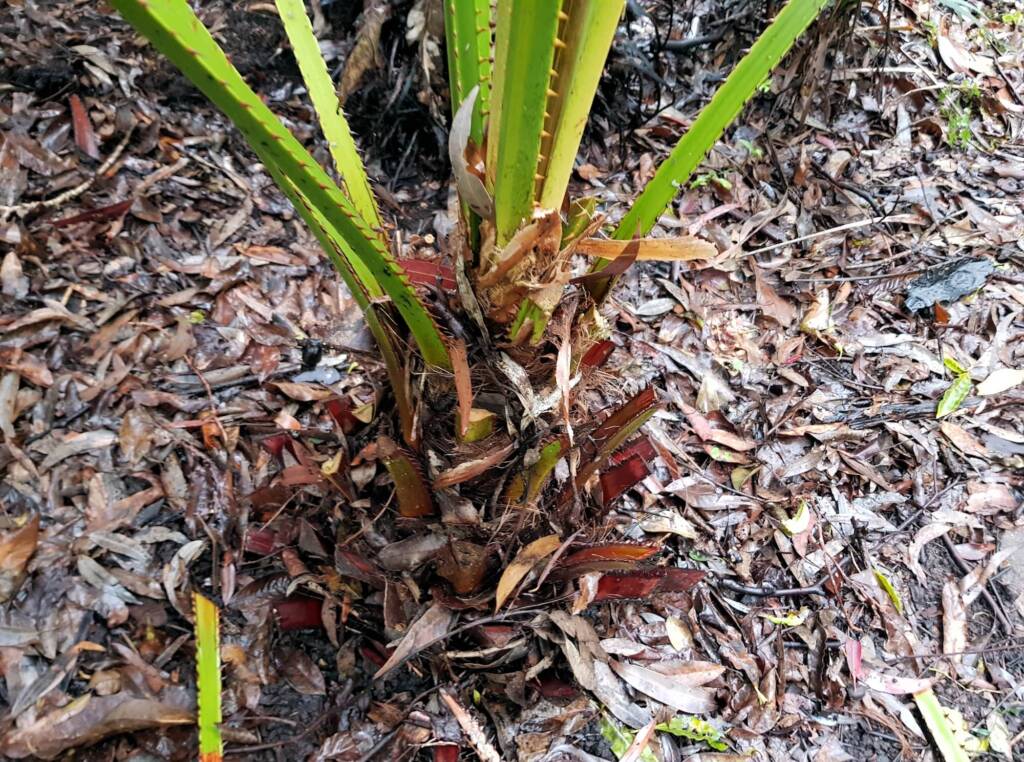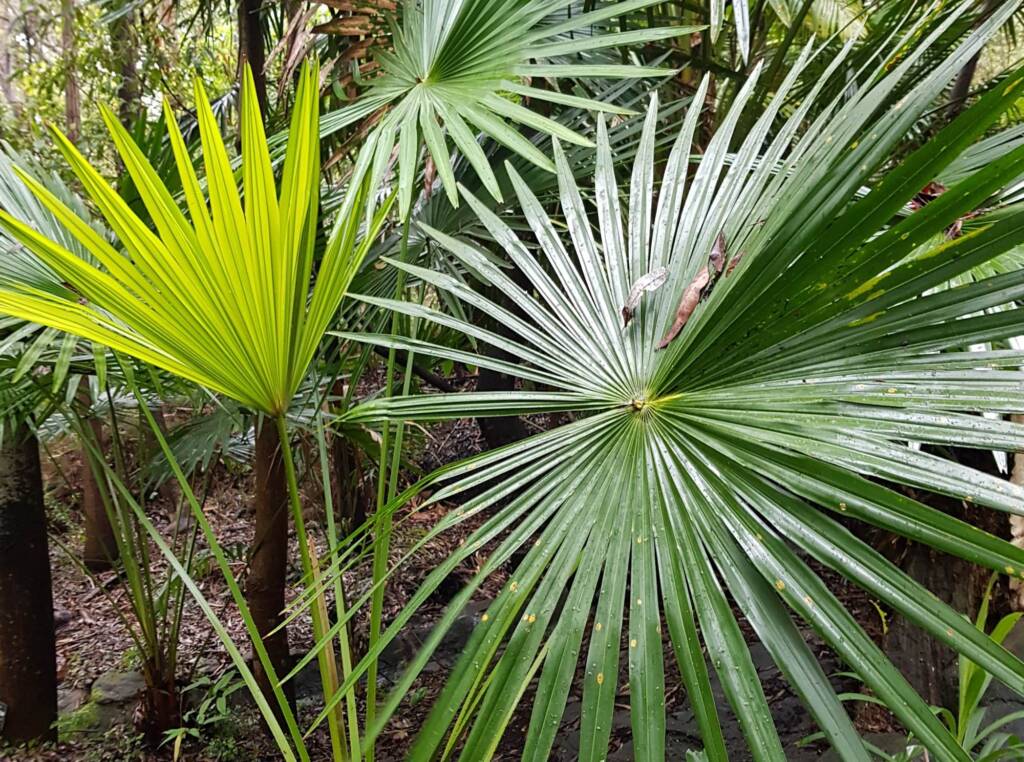Stony Range RBG FloraBanksia serrata Bird’s Nest Fern Boronia mollis x fraseri Broad-leaved Drumsticks Cabbage Tree Palm Cyathea australis Flame Pea Flannel Flower Fuchsia Heath Native Violet Pink Rock Orchid Pittosporum revolutum Staghorn
The Cabbage Tree Palm (Livistona australis) with its distinctive fan shape, grows to a tall, slender palm of up to 25 m in height, with a crown spread of about 0.35 m in diameter.
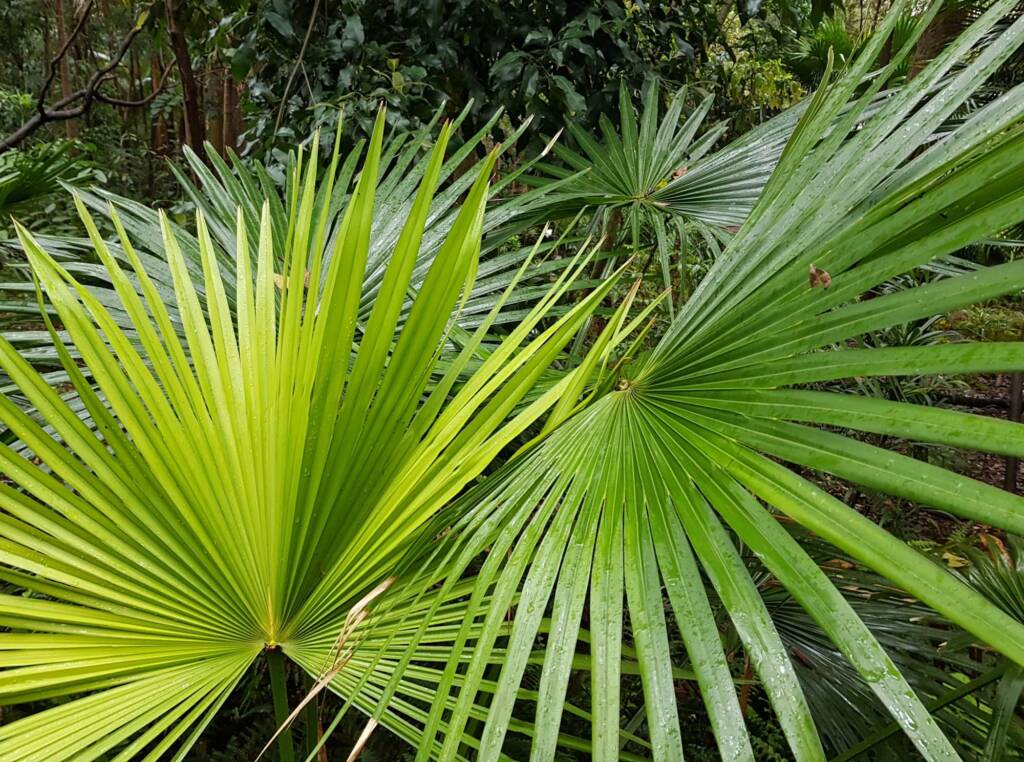
The leaves with petiole of approximately 1–1.5 m long. The petiole is a stalk that connects the leaf blade with the leaf base/stem. The leaf blade is the major photosynthetic surface of the plant, has a flattened, perpendicular to the stem and is able to twist the leaf to face the sun. These leaf blades create a circular fan shape up to 50 cm in diameter.

In summer it bears cream-white flower spikes. In the natural environment, the trees accumulate dead fronds or leaves. In cultivation these dead fronds are often removed.
The Cabbage Tree Palm produces red fruit, that turns black..
In the natural environment this plant is usually found in moist open forest, in swampy sites and on the margins of rainforests or near the sea. Being salt, frost and wind tolerant, they occur in exposed coastal habitats along the Australian east coast. It has a wide spread along the New South Wales coast, that extends north into Queensland and south into eastern Victoria. The most southerly stand of Cabbage Tree Palms are near Cabbage Tree Creek, 30 kilometres east of Orbost in Victoria.
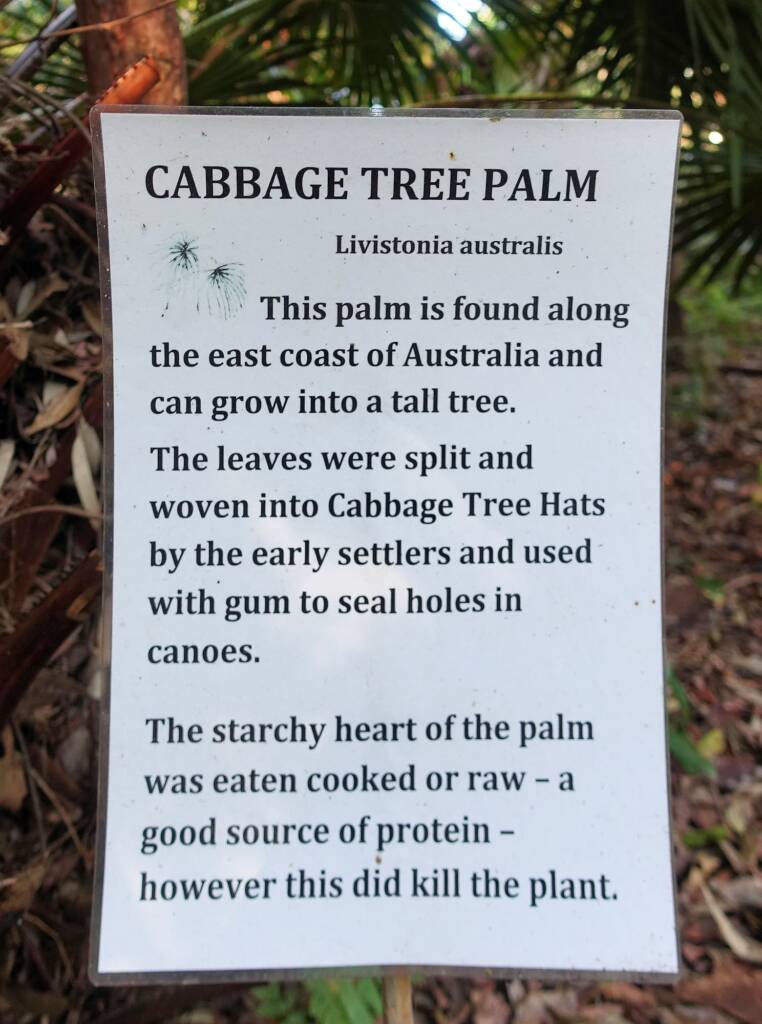
The early European settlers in Australia would use the fibre from the native palm to create the cabbage tree hat, that was a form of headwear during the colonial era. They also knew that the tip of the tree was edible, although eating it killed the tree.
Significance in Aboriginal Culture
The Cabbage Tree Palm was called ‘Dtharowal‘, from the Dharawal language. The Darug and Cadigal people called it ‘daranggara‘ also spelt ‘darangguru‘.
The fibrous leaves were used by Aboriginal people in a variety of ways. The new growth of the tree could be cooked or eaten raw. The heart of the trunk could be cooked as a medicine to ease a sore throat. The leaves of the Cabbage Tree Palm were also used for shelter and fibres for string, rope and fishing lines.
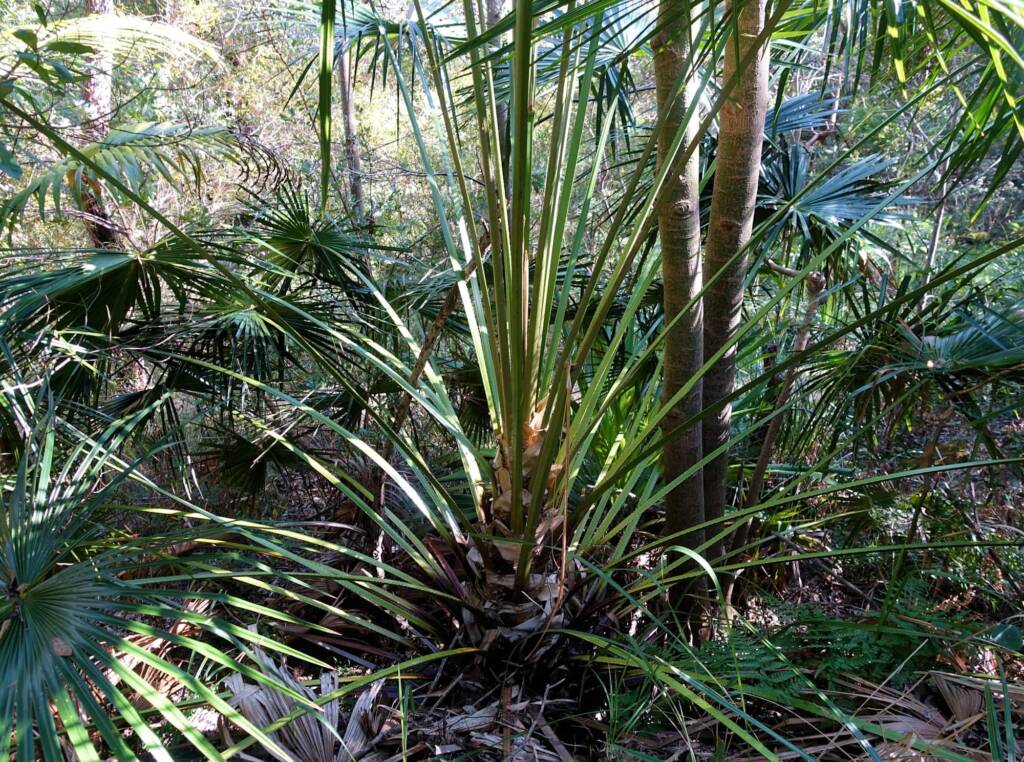
Common name
Cabbage-tree Palm, Cabbage Tree Palm, Cabbage Fan Palm, Cabbage Palm, Fan Palm.
- Scientific classification
- Kingdom: Plantae
- Phylum: Charophyta
- Class: Equisetopsida
- Subclass: Magnoliidae
- Superorder: Lilianae
- Order: Arecales
- Family: Arecaceae
- Genus: Livistona
- Species: Livistona australis
Footnote & References
- Livistona australis (R.Br.) Mart., Australian Cabbage Palm, Atlas of Living Australia, https://bie.ala.org.au/species/https://id.biodiversity.org.au/taxon/apni/51266874
- Livistona australis (R.Br.) Mart., PlantNET, New South Wales Flora Online, https://plantnet.rbgsyd.nsw.gov.au/cgi-bin/NSWfl.pl?page=nswfl&name=Livistona~australis&lvl=sp
Stony Range RBG FloraBanksia serrata Bird’s Nest Fern Boronia mollis x fraseri Broad-leaved Drumsticks Cabbage Tree Palm Cyathea australis Flame Pea Flannel Flower Fuchsia Heath Native Violet Pink Rock Orchid Pittosporum revolutum Staghorn
Stony Range Regional Botanic GardenStony Range RBG Fauna Stony Range RBG Flora
New South WalesBarunguba Montague Island Bourke Blue Mountains Bundeena Central Coast Kosciuszko National Park Mount Kaputar National Park Lower North Shore Northern Beaches Sapphire Coast Snowy Mountains Region South Coast Stony Range Regional Botanic Garden Sydney

